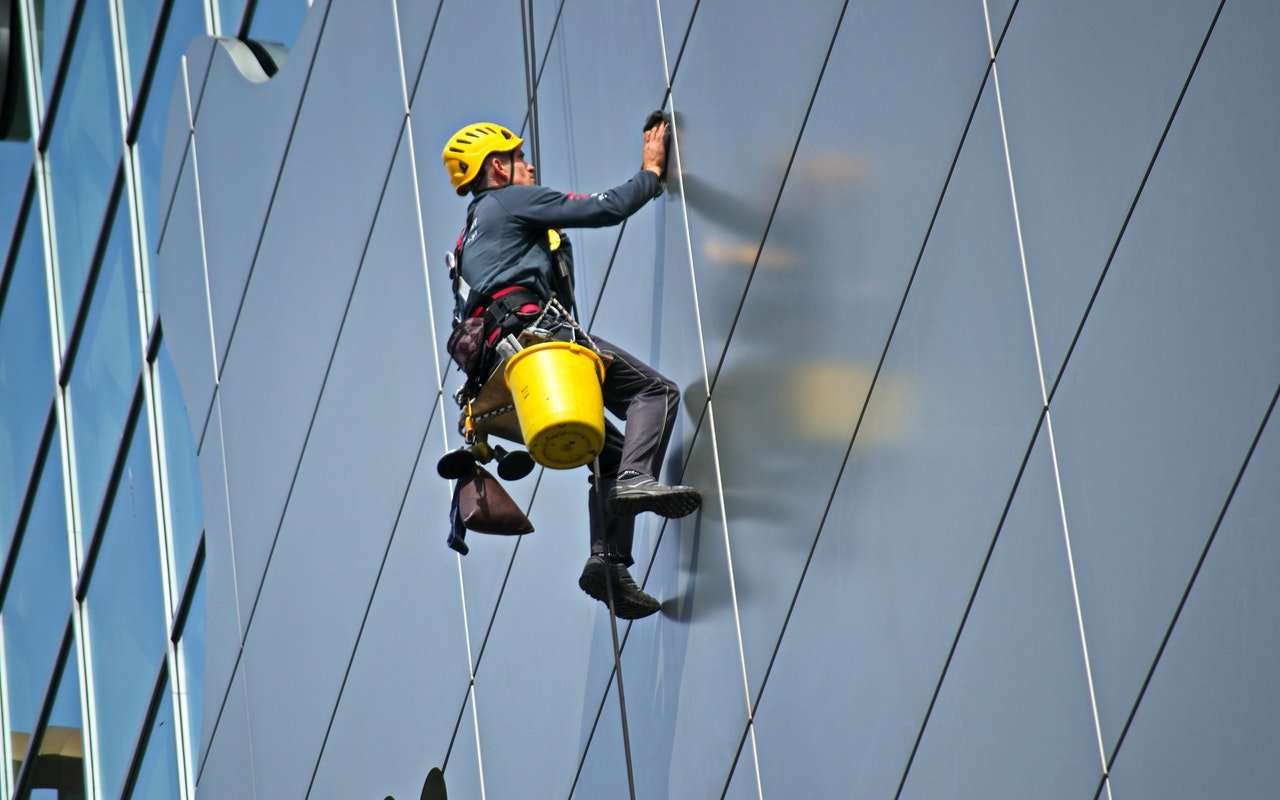Years ago, American workers were subjected to some horrendous working conditions that led to numerous serious injuries and even death. In order to help both companies and employees stay safe, a governmental department was created. A large portion of keeping people safe is teaching people the things they have to know while on the job. This training is absolutely mandatory for every employee.
Many times, new employees find the safety training portion of orientation rather boring. This could lead to people daydreaming or even sleeping during important safety training that could one day save their lives. To limit accidents, you need to keep people awake and paying attention during safety training. Here are some ways to help make OSHA training more fun.
What is OSHA?
The Occupational Safety and Health Administration (OSHA) was formed in 1970 to help promote a safe and healthy work environment. As part of the OSHA definition, it’s a government agency that creates laws to keep employees safe. They handle risk management to prevent accidents from happening in the first place. The administration peaks for people in any work environment. There are certain industries that require more attention due to their dangerous nature.
Companies must inform employees of any potential hazards through a variety of methods, including signs, training, and access to information. Since training is the responsibility of the organization, you must demonstrate appropriate training with tests and other proof of comprehension. This will protect you in case someone claims they weren’t properly trained. You should also be up to date on all training requirements to ensure you don’t miss an important part of the training.
How Can you Make OSHA Training More Fun?
Talking about safety standards and proper use of different machines can get quite boring. It’s important to keep everything amusing to ensure that your class is engaged. Here are some tips on how to make OSHA training fun.
1. Be a Fun Teacher
The truth of the matter is that the teacher can impact the energy in the classroom and either promote or discourage an atmosphere conducive to learning. It’s your job to be energetic and engaging to keep your class awake. Use a loud voice, use your hands when you talk, utilize a lot of media examples to add visual and audio stimulation, and wear colorful clothes.
As a teacher, you cannot allow people falling asleep while you are teaching something so important. If you do notice someone falling asleep, it’s your responsibility to wake them up. If they can’t stay awake, they should be prepared to do extra homework on the topic they are sleeping through. When people see they can’t get away with sleeping, they will be sure to have a cup of coffee before class and pay attention. As the trainer, you could even be held responsible if the bored person ends up injured later on in their role with the company.

When attendees aren’t necessarily engaged, you need to call on them and get them involved. If you get glazed eyes from a number of listeners throughout the day, you may want to add more activities to keep energy up.
2. Use Games
The game Jeopardy has been on the air for decades, so everyone is sure to understand the premise. You will create categories and create questions for different values underneath each category. The higher the value, the harder the question. The person who buzzes in first attempts to answer in the form of a question. The winner picks the next question.
Create your own questions of varying difficulties regarding the information you’ve been learning. Don’t forget to throw some review questions in there or some trick questions. This is a great option for the end of the course as a review.
Be sure to have a prize to increase the stakes for the people playing. Good prizes include a pizza party, breakfast, gift cards, an extra casual day, or ice cream. The better the prize, the more likely people will be to study hard.
There are plenty of other games you can try if you don’t want to play Jeopardy. Try a variety of different games to learn what your class likes the best. Don’t forget to make sure they’re learning from the game too!
3. Utilize Anecdotes
Telling someone that touching a live wire can be dangerous is pretty clear in itself. However, it’s not that memorable. If you tell the story about a young new hire who accidentally grabbed the wire and ended up with a deformed hand, it will be more likely to stick with your class.
There is something about the vividness of stories and anecdotes that stand out compared to information displayed in a textbook. Be sure to fill the story with as much detail as possible, such as signs that it was a live wire, to fill the story with most information possible. Give examples and tell stories to teach material throughout training.

When telling the story, be sure to do your best to connect with your class emotionally. You can give the person in the story a relatable back story, or you can tell people to insert themselves into the story. However you do it, you want to get your class to get invested in the story. This will make safety that much more personal and that much more important.
4. Targeted Training
Eliminate unnecessary classes and reduce costs by focusing training on what the people in your class need to focus on. Consider giving all newcomers an assessment to determine what areas required the most training. You may be able to place people more appropriately or eliminate entire portions of the training all together if it does not apply to the position or if everybody already knows the material.
On the other hand, some people may have a certification but not remember the information. Just because someone has a certification it does not necessarily mean they don’t need training in that area.
5. Timing Matters
Have you ever watched a movie that just seems to go on far too long? You get jittery and can’t wait to leave and get the smell of popcorn out of your hair. Many people feel even worse in a boring training class.

It’s important to focus on the length of your lessons to plan the appropriate breaks. Multiple breaks throughout the day give the class the opportunity to get some air and come back to class refreshed and ready to learn. You can have set breaks or send people on break when you notice their eyes starting to glaze over.
You also want to ensure that no one lesson is especially long. Try to keep them all short. Multiple, short lessons will stay with students longer than one or two really long lessons. This increases the likelihood of your class retaining the information and preventing an accident.
6. Engage with Class Often
Some classes consist of mostly just listening and taking notes. This can get old fast. Instead, try lessons that encourage a lot of activity and engagement from the class. This means a lot of questions and activities. Ask plenty of questions throughout the day to gauge how well your class is catching on to the information. Avoid calling on the same people over and over.
In fact, you should call on the people who are struggling first. If someone is struggling, you should offer additional help after training is over. You also want to keep people up and moving. You can try team activities to keep people talking about the topic. When the class works together, it encourages a team spirit that helps promote a safe environment. People will feel comfortable enough to ask others for help when they have a question or to speak up when they see someone doing something incorrectly.
7. You’re Allowed to Be Funny
You need to take safety training very seriously. It is how people learn how to behave in the workplace. It’s also how people learn how to prevent accidents. While these are serious topics, that doesn’t mean that you can’t be a little light-hearted at times.

There are plenty of funny memes and jokes you can incorporate into your lessons. You may even find or make some educational ones that might even help the class learn the material. However, don’t be afraid to take a break every now and then to show a video of safety fails or a funny cartoon on the topic. It will help the class go by more quickly, and the students will be more willing to participate.
8. Be Current. Stay Current
Rules and regulations change quite often, especially in certain industries. It’s crucial to be up to date to keep you and your employees within compliance. OSHA 10 is the latest version at this time, but be sure to check for updates before new classes.
However, there may be crucial updates after people have already been trained. They still need to know the proper procedures. Make sure everyone has certification in the updated version. People who don’t may have to get re-certified. Plan training around certain important updates to avoid the need for secondary training. For small changes, you have the option to send a company-wide email or use game-based learning methodologies.
9. Make Fun Videos
Many trainers use video to help stimulate the class while getting the class to learn at the same time. There are plenty of ways you can go about this. You can always use the provided videos. However, this can be quite boring. Your class might lose interest in the stock videos rather quickly.
You should consider making funny videos with the rest of the staff. You can mimic other videos and even include additional information the original videos missed. You can even have the class make videos themselves. Give everyone a different topic to teach the class. Be sure that they cover all of the information before you have them present to the others. You can use old student videos to introduce the concept to the class.
10. End of Class Survey
Even the best training class can be improved. On the last day of training, you should give every member of the class a detailed survey about their experience in training. Ask about the trainer, the material, the speed of the class, the technology used, and the effectiveness of different exercises. Offer plenty of opportunity for additional comments. Use this information to make the appropriate changes. Those changes should improve the training within the budget allotted.
The best training programs are constantly changing to implement the best practices. This means you need to stay on top of the latest training technology and information in your field. If you find a great solution, don’t hesitate to bring it to your managers’ attention. They may approve the idea.

OSHA 10 is the tool you use as a trainer to inform and protect the new hires coming on to your team. Injuries at the workplace cost a lot of money and extra work, so it’s important to manage the risk. Education is one of the best ways to stop injuries before they happen. However, for people to learn, you need to engage with them. Use the tips above to keep the class fun and active. You’ll help more people, in the long run, this way. When everyone is in compliance, people are safer, and you get more work done. The better the training class, the better the chance of a safe workplace.






